Education
![]()
What and Why | Let's Tackle Scientific Problems | Junior High School Science | Only One Earth | Whiz Bang Science | Maths Wonderland | Digital Pictorial Book - Nature in Japan - | Experiments Are Fun | Pythagora Switch | Pythagora Switch II | Pythagora Switch III | Pythagora Switch IV | Let's Get Movin' | Science Sleuth | ABU Voyage to the Future | The Science Station | We Love Science | Joule & Professor Watt | Wonderful Science | KIDS SURVIVAL SCHOOL | What Can We Do? Our Planet’s Future | Listen to the Earth | The Power to Save Lives in Disasters | Let's enjoy Math with Barky the Dog | LIFE IS A CHALLENGE | Bravo to Music! | TAKE TECH | Viewpoint Science | Story Land | Endless Wonders | TEXICO |
 Pythagora Switch IV | Pythagora Switch IV
Pythagora Switch IV | Pythagora Switch IV
ED120700![]()
ピタゴラスイッチⅣ [NHK]
![]()
![]()
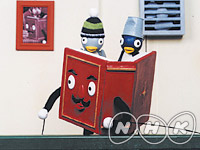
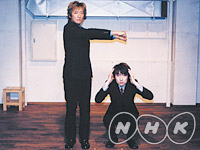
|Length : 10min. x11 |Year : 2007 |
Structures full of wonders, interesting ways of thinking and various laws are hidden in our daily lives. For example, why do various musical instruments make so different sounds?
This series of a TV program introduces such 'surprises' for children, which help to see things in different ways once they understand them. The purpose of this series is to bring up children's thinking power.
1. Things That Are Made in Layers
2. The Force of Spinning Things
3. Things Make Noise Because They Vibrate
4. It Wasn't Even Switched On
5. Round Objects Roll
6. You Can Read the Time
7. Letters That Come from Pictures
8. They Are All the Same Shape
9. The Perfect Circle
10. Song Special
11. Keeping Them Out
 Pythagora Switch III | Pythagora Switch III
Pythagora Switch III | Pythagora Switch III
ED120600![]()
ピタゴラスイッチⅢ [NHK]
![]()
![]()
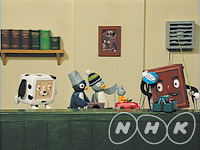
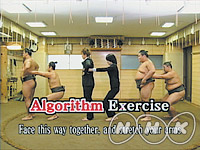
|Length : 10min. x13 |Year : 2006 |
Structures full of wonders, interesting ways of thinking and various laws are hidden in our daily lives. For example, a box becomes a flat piece of paper; there are various units to count different things; something that rotates always has an axis, to name a few.
This new TV program series introduces such 'surprises' for children, which helps them see things in different ways once they understand them.
The purpose of this series is to bring up children's thinking power.
1. This Will Make You Stronger
2. All You Need Is One
3. It's Shaped That Way On Purpose
4. Which One Is Moving?
5. You Can Figure It Out By Vertical and Horizontal
6. You Can Compare Them This Way
7. Reasoning Logic
8. A Device For Gathering
9. Choose From A Sample
10. Why Is It Bumpy?
11. It Can Be Used Anywhere
12. A Device That Makes Things Easier To See
13. A Device That Prevent You From Making A Mistake
 Pythagora Switch II | Pythagora Switch II
Pythagora Switch II | Pythagora Switch II
ED120400![]()
ピタゴラスイッチⅡ [NHK]
![]()
![]()
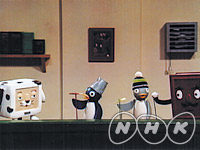

|Length : 10min. x13 |Year : 2004 |
Structures full of wonders, interesting ways of thinking and various laws are hidden in our daily. For example, a box becomes a flat piece of paper, there are various units to count different things, something that rotates always has an axis, to name a few.
This new TV program series introduces such "surprises"for children, which help them see things in different ways once they understand them. The purpose of this series is to bring up children's thinking power.
1. Familiar Scales
2. Give and Take
3. Hiding Well
4. Useful Rules
5. See the Invisible
6. The Same System?
7. Ideas for Easier Use
8. Relaying Books
9. Part and the Whole
10. Many Ways of Sorting
11. Invisible Power
12. Sorting Out Things
13. Think Backwards
 Pythagora Switch | Pythagora Switch
Pythagora Switch | Pythagora Switch
ED110300![]()
ピタゴラスイッチ [NHK]
![]()
![]()
![]()
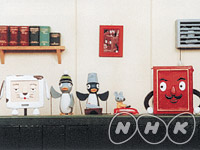
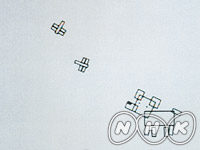
|Length : 10min. x13 |Year : 2003 |
Structures full of wonders, interesting ways of thinking and various laws are hidden in our daily lives. For example, a box becomes a flat piece of paper; there are various units to count different things; something that roates always has an axis, to nage a few.
This series of a TV program introduces such 'surprises' for children, which help to see things in different ways once they understand them. The purpose of this series is to bring up children's thinking power.
1. Base of Length
2. Can You See the Wind?
3. Many Ways of Counting?
4. Things that Spin
5. Looking from a Different Side
6. Dots Make a Picture?
7. Signs Tell You?
8. A Box is Flat?
9. The Rest is the Answer?
10. A Trace is Left
11. A Gesture Talks
12. The Perfect Shape
13. Looking Small?
 Experiments Are Fun | Experiments Are Fun
Experiments Are Fun | Experiments Are Fun
ED100000![]()
やってみようなんでも実験 [NHK]
![]()
![]()
![]()
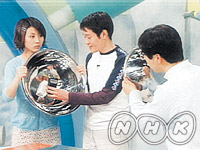

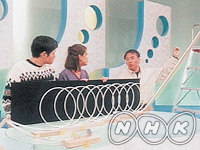
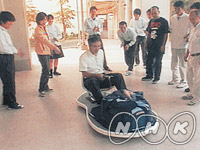
|Length : 25min. x26 |Year : 2000 |
This series aims to encourage young people to find things out for themselves in the spirit of 'giving it a try', and to show that so many experiments can be fun.
Every program features watch-and-see experiments unique to that episode's Master of Experiments, as well as experiments that will encourage everyone to have a try. In these experiments we use everyday items to delve into science.
Experiments often involve failure. Not even the Masters of Experiments are exceptions to this. In the programs, we show their experiments in full even if they do not entirely succeed, because we think it more important to nurture the process of experiment than it is to get the "right" result.
1. Let's Build a Gigantic Electrostatic Generator!
2. Let's Try to Create a Huge Rainbow
3. Recreating the Pterosaur, a Prehistoric Glider
4. Moulding Aluminium into a Bell
5. Speedy Hydrofoils, I Can Make One Myself!
6. Feel the Effects of Solar Power!
7. A Hose and the Speed of Sound
8. Let's Make an Air-Engine!
9. Spin and Rise: Making Amazing Kites!
10. Let's Measure the Earth's Weight
11. Strength Guaranteed: Building with Paper
12. The Science of Air Cannons
13. The Amazing Art Created by Vibrations
14. Antennas of All Shapes and Sizes
15. Up and Away, Rubber-band-driven Helicopters!
16. Say Cheese! Super-panoramic Photos with Pin-hole Cameras
17. Wondrous Colors: The Science of Polarisation
18. Power of Waterwheels!
19. Heat Generates Music? "The Whistling Pot Challenge"
20. Let's Build a Clockwork Doll: A Robot from the Edo Period
21. Zero Friction Challenge: Hovercraft, Float and Run!
22. The First Magnetic Recording: Let's Make a Wire Recorder
23. Vibration Makes Scrub Brush Car Go
24. Gravity Powers a Roller Coaster
25. Harnessing the Unusual Power of Static Electricity
26. Making Musical Instruments from Everyday















